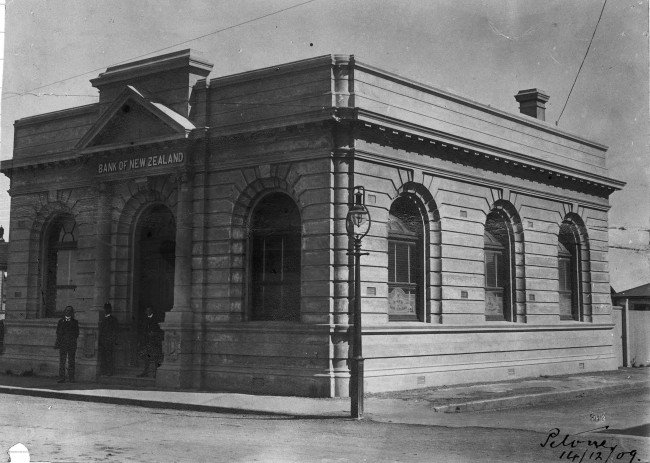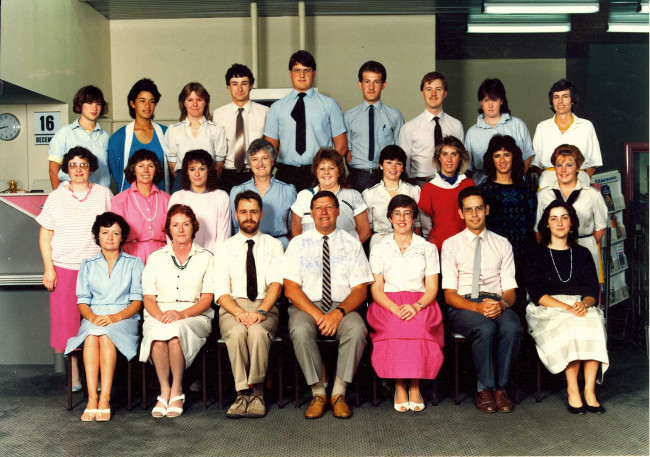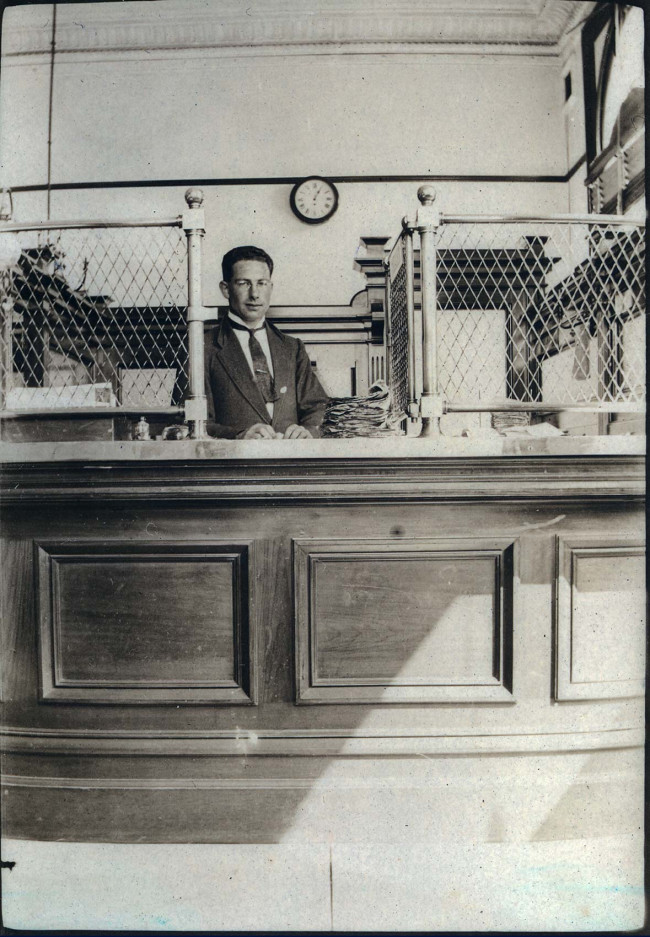125 years in Petone
When BNZ Petone opened on the 23rd of November 1892, it operated as a sub-agency of the Hutt Agency. As business grew, it was upgraded to Agency status in 1903 and finally Branch status in 1904.
The first Manager, Mr Sidney Barraud, oversaw Petone from Lower Hutt, where he served until his retirement in 1909. This was same year staff moved into their iconic new premises on Jackson Street.
By 1921 Petone was a fully independent branch with its own manager, Mr Andrew Scott. 1929 saw the exciting installation of electric lighting. Before long expanding staff numbers called for alterations. These were extensive but still did not meet increasing demands and the outbreak of WWII delayed any further changes.
Despite the growth in housing that followed the close of war, it was rare for banks to offer home loans. Instead, short terms loans for the purchase of locally produced Vauxhalls and Chevrolets were a more frequent subject of the Petone Managers Diaries. Customers were often employees at the Ford or General Motors factories or running their own small businesses.
In the early 1950s it was decided that the office should be refitted to accommodate an extra Tellers Box, bringing the total to three. Working space was extended to allow for up to seventeen staff. It was believed the newly renovated building would meet their requirements “for all time”.
By the 1980s, however, more space was necessary. The site next to the bank was purchased to accommodate the extension. This led to a feature in the 1984 edition of New Zealand Architect, praising the retention of the original facade.
After a centenary of service, by 1992 BNZ Petone had grown to employ 25 staff, still operating from their 1909 location on Jackson Street. In 2003 the old premises was sold and the branch relocated down the street.

BNZ Petone in 1909

Petone staff in 1988.

Petone Teller Ron Cowie in 1914




